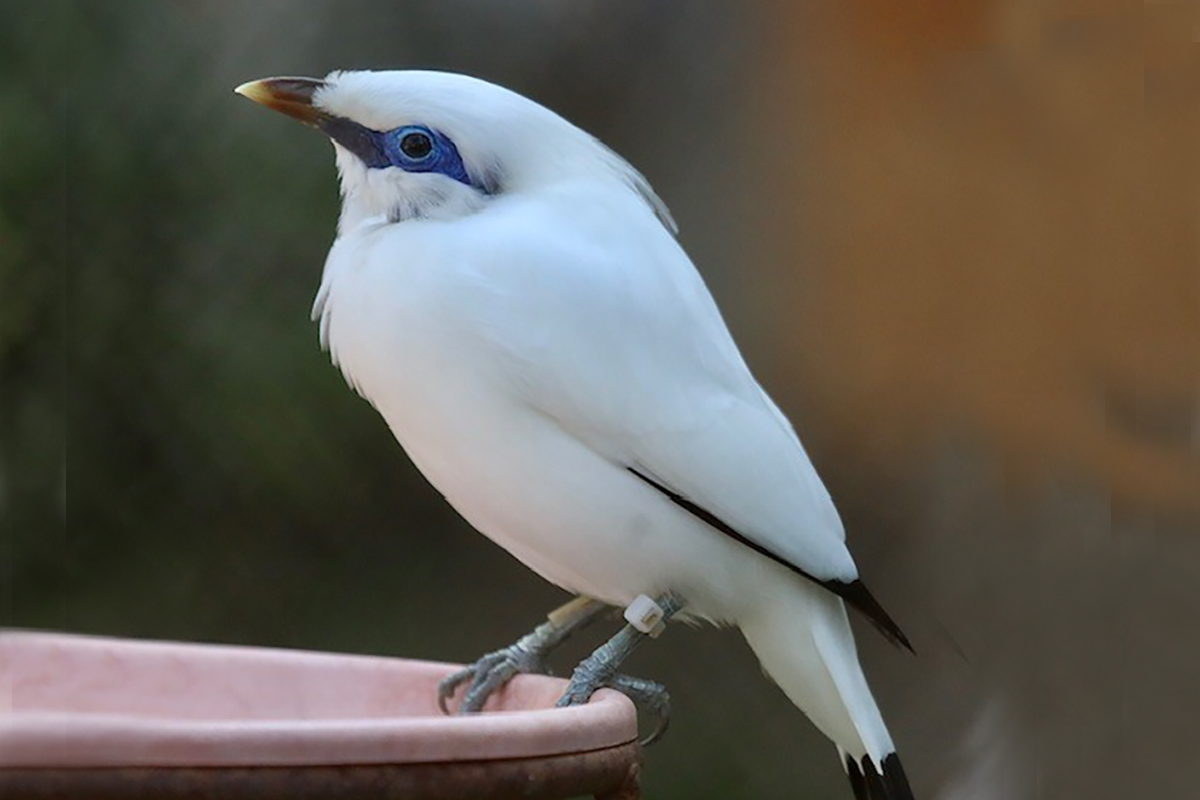Bali myna
Leucopsar rothschildi

In the Zoo
Bird Aviary across from Koala Crossing
Fascinating Facts
Bali mynas are the national bird of Bali. They were first formally described by British ornithologist Lord Walter Rothschild in 1910. Since their “discovery”, their numbers have plummeted dramatically, despite their range being entirely limited to a National Park. With their striking appearance these birds are extremely popular in the caged bird trade and a single bird can fetch thousands of dollars on the black market. In 2001 there were only 6 Bali mynas left in the wild and populations were being maintained by the release of captive birds, however39 captive birds slated for release into the wild were stolen, so problems still persist with the captive release program.
Physical Characteristics
Male and female Bali mynas are similar in appearance. They weigh about 3 ounces and are approximately 10 inches in length. They are almost all white, with the exception of their wing and tail tips which are black. They have a crest and bright blue skin around the eyes. The bill is yellow-ish brown and the legs blue-ish gray. They have a lifespan of up to 25 years in zoos.
Diet
They feed on seeds, small fruits, insects, worms and the occasional small reptile.
Habitat
During breeding season Bali mynas are found in open shrub and palm savanna, during non-breeding season they are found in tropical forest edge and flooded savanna woodland.
Range
They are found in the Bali Barat Nature Reserve on the island of Bali, Indonesia. http://maps.iucnredlist.org/
Social Behavior
Both sexes vocalize with a series of sharp, chattering calls. They are monogamous and will form long-term pair bonds, which they reinforce through mutual displays and preening behavior. Bali mynas will nest in a tree cavity and lay a clutch of 2 – 3 eggs. The female will incubate the eggs and both parents will help feed the young.
Status in the Wild
IUCN – Critically Endangered These birds are critically endangered due to the caged bird trade where they can fetch thousands of dollars on the black market. They are also threatened by habitat destruction and degradation.
